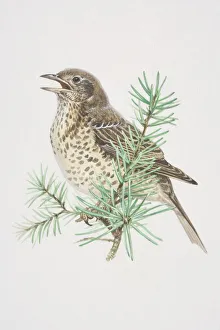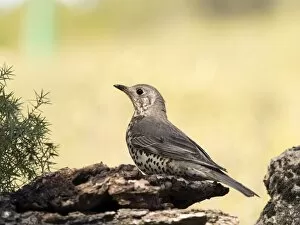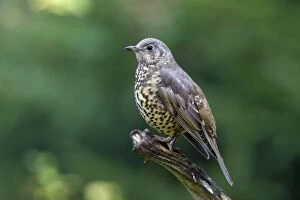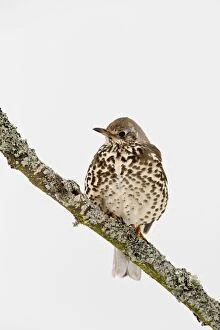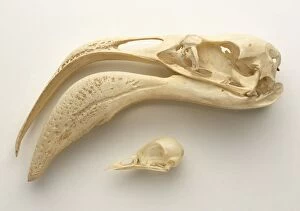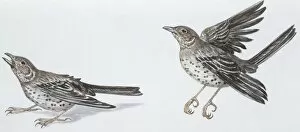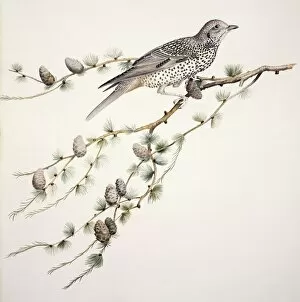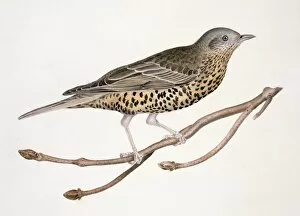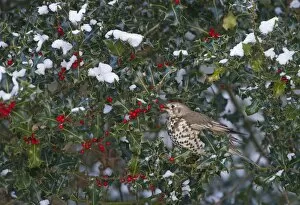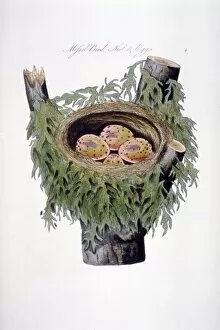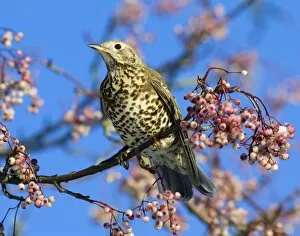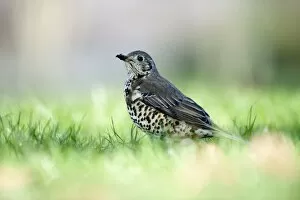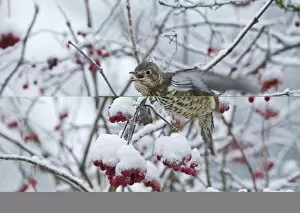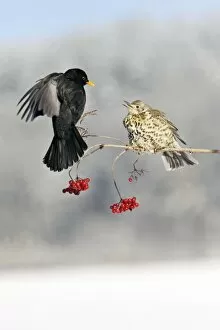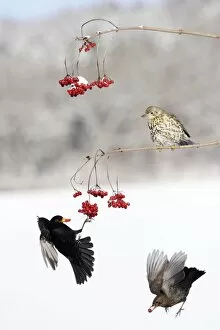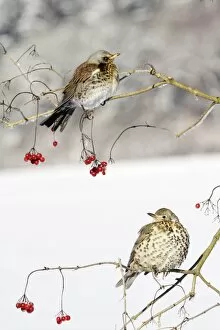Turdus Viscivorus Collection (page 2)
The mistle thrush, scientifically known as Turdus viscivorus, is a captivating European bird species that has fascinated naturalists for centuries
All Professionally Made to Order for Quick Shipping
The mistle thrush, scientifically known as Turdus viscivorus, is a captivating European bird species that has fascinated naturalists for centuries. Its beauty and behavior have been documented through various mediums, including lithographs and photographs. In 1897, a lithograph featuring the eggs of European birds was published, showcasing the unique characteristics of each species. Among them were the eggs of the mistle thrush, alongside other notable birds like dippers, warblers, spoonbills, ptarmigans, falcons, curlews, and crows. This illustration provided valuable insights into avian diversity. Another lithograph from 1882 focused specifically on thrushes (Turdidae), highlighting their distinct features and plumage variations. The mistle thrush undoubtedly stood out with its elegant appearance and melodious song. One photograph captured a mistle thrush perched on a rowan tree in London during December. Against the backdrop of an urban landscape adorned with winter foliage, this bird's call echoed through the city streets—a testament to nature's resilience amidst bustling human activity. A heartwarming image depicted a mistle thrush nurturing its chick in a nest within Northumberland National Park in the UK. This snapshot showcased parental care among these avian creatures while emphasizing their importance in maintaining ecological balance. During February in Hertfordshire England's snowy landscapes; another picture portrayed a resilient mistle thrush braving harsh weather conditions—an embodiment of adaptability against adversity. An artist named George James Rankin created an enchanting depiction of this species around 1910—capturing its essence through intricate details and vibrant colors that brought it to life on canvas or paper. From Utrecht in The Netherlands to Spain in Europe; these birds have also made appearances across borders. Whether perched on rocks or calling out from trees—their presence transcends geographical boundaries—showcasing their widespread distribution and adaptability.

